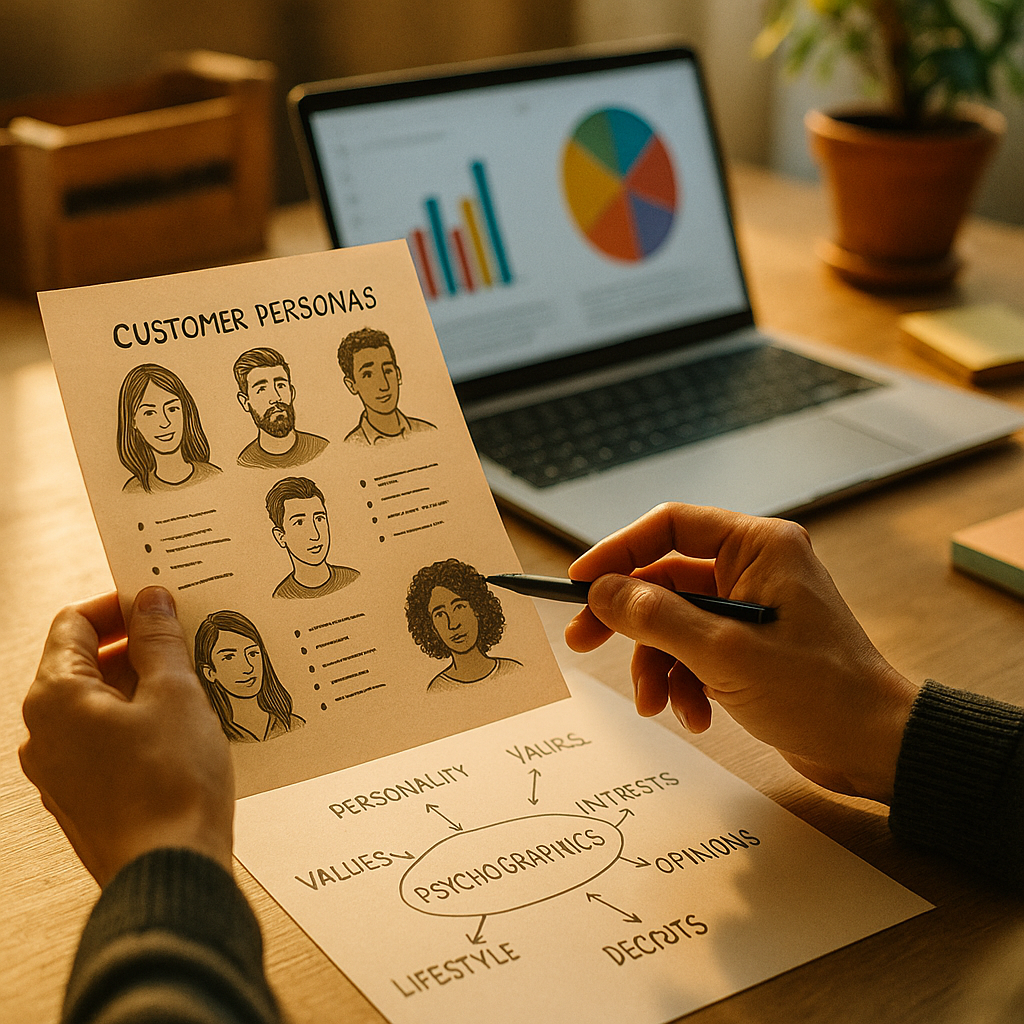Crafting deeper connections with your customers starts with understanding who they are. A guide to creating customer personas based on psychographic data can transform your marketing by focusing on lifestyle, values, and attitudes, not just demographics. Discover how to build truly resonant personas—and why going beyond surface-level traits matters in 2025.
Understanding Psychographic Data in Persona Development
Psychographic data delves beneath the surface, revealing interests, beliefs, motivations, and purchasing drivers. Unlike demographic data—which covers age, gender, income, and location—psychographics focus on the “why” behind customer behaviors. By integrating attitudes, lifestyles, and personal values, businesses gain profound insights that guide personalized marketing and product decisions, resulting in stronger, longer-lasting customer relationships.
Recent studies from industry leaders show that campaigns using psychographic targeting achieve up to 32% higher engagement compared to demographic-only targeting. Whether you’re a B2C marketer or crafting complex B2B messaging, deploying psychographic data is crucial for competitive differentiation in 2025.
Collecting and Analyzing Customer Psychographic Insights
Effective customer personas begin with robust data collection and analysis. To gather reliable psychographic information:
- Surveys and Questionnaires: Design questions that probe attitudes, values, lifestyles, and habits.
- Social Media Listening: Monitor conversations to detect emerging interests, communities, and opinions.
- Website Analytics: Track onsite behavior, such as content preferences, paths, and time spent on specific topics.
- Customer Interviews: Conduct in-depth interviews with existing customers to deeply understand their motivations.
- Third-Party Data Providers: Acquire psychographic segments from reputable data brokers, ensuring data privacy compliance.
Once collected, analyze patterns and clusters—use sentiment analysis, thematic coding, and machine learning tools to transform raw data into actionable insights. Applying these approaches ensures accuracy and keeps personas up-to-date in a swiftly changing market.
Steps to Build Psychographic-Based Customer Personas
After gathering actionable psychographic data, follow a systematic persona-building process to maximize validity:
- Group by Shared Traits: Identify recurring lifestyle attributes, motivations, and value systems among your customers.
- Create Detailed Profiles: For each group, craft profiles detailing their goals, pain points, drives, beliefs, and preferred experiences.
- Map the Customer Journey: Overlay psychographic data onto customer behavior at each touchpoint, from discovery to purchase and advocacy.
- Validate with Stakeholders: Collaborate with teams across marketing, sales, support, and product to refine persona accuracy.
- Iterate and Update: Continuously refine personas based on new data, market trends, and feedback.
Modern persona templates integrate both demographic and psychographic variables. For 2025, consider digital-first attributes—such as preferred social channels, content types, and stance on emerging tech like generative AI—to ensure maximum relevance.
Applying Psychographic Personas to Marketing Strategy
With robust, current personas, you can craft campaigns and products that speak directly to customers’ inner motivations. Here’s how psychographic-based personas inform strategic planning:
- Ultra-Targeted Messaging: Tailor value propositions and creative assets to align with customers’ lifestyles and aspirations.
- Channel Selection: Choose media platforms favored by each persona group, from visual-first apps to niche online communities.
- Product Innovation: Identify gaps in customer satisfaction based on personal beliefs and needs to inform new offerings.
- Customer Loyalty Drives: Design rewards, experiences, and communities that echo personas’ core motivations and values.
Teams equipped with real, research-driven personas outperform those relying on guesswork. In 2025, success hinges on connecting authentically—psychographic data is the linchpin.
Ensuring Data Quality and Ethical Considerations
Maintaining data integrity and ethical standards is central to Google’s EEAT (Experience, Expertise, Authoritativeness, Trustworthiness) best practices:
- Transparency: Inform customers when collecting psychographic data and clearly state its intended use.
- Consent and Privacy: Align all data collection with GDPR, CCPA, and local privacy regulations, using secure storage and access protocols.
- Bias Prevention: Cross-validate persona samples to prevent stereotypes or misrepresentation.
- Continuous Review: Regularly audit persona content and data sources for relevancy, accuracy, and inclusivity.
Respecting privacy and using data ethically not only builds trust—it also delivers more authentic, effective personas that genuinely benefit your audience and brand.
Measuring the Impact of Psychographic Personas
Implementation is only as valuable as its measurable results. After integrating psychographic personas into your marketing:
- Monitor campaign engagement rates, conversion rates, and customer retention to assess alignment between messaging and actual customer motivations.
- Analyze shifts in brand sentiment on social platforms and through direct customer feedback channels.
- Test and optimize campaigns using A/B and multivariate methods centered on persona-driven content hypotheses.
Leading brands have reported up to 25% sales uplift when using updated, effective personas. By consistently measuring and iterating, you ensure your personas remain a dynamic, growth-driving resource.
FAQs: Creating Customer Personas with Psychographic Data
-
What is psychographic data in marketing?
Psychographic data encompasses qualitative information about customers’ interests, attitudes, beliefs, and lifestyles. Marketers use it to understand deeper motivations for creating targeted, relevant campaigns.
-
How is psychographic data different from demographic data?
Demographics define who your customer is (age, gender, income), while psychographics reveal why they make certain decisions (values, aspirations, fears, motivators).
-
What tools are best for collecting psychographic data in 2025?
Businesses increasingly use advanced analytics platforms, social listening tools, AI-driven surveys, and privacy-compliant third-party data providers. Combining these yields the richest insights.
-
How often should I update customer personas?
Review and update your personas at least annually or whenever you see significant shifts in customer behaviors, interests, or market conditions.
-
Are psychographic personas only relevant for B2C marketing?
No—B2B marketers achieve greater success when factoring in buyer motivations, company culture, and professional values alongside firmographics.
By integrating psychographic data into your customer personas, you unlock the power to create campaigns that strike a genuine chord. In 2025 and beyond, understanding what drives your audience ensures sustainable, competitive growth—make psychographics your strategic advantage.
